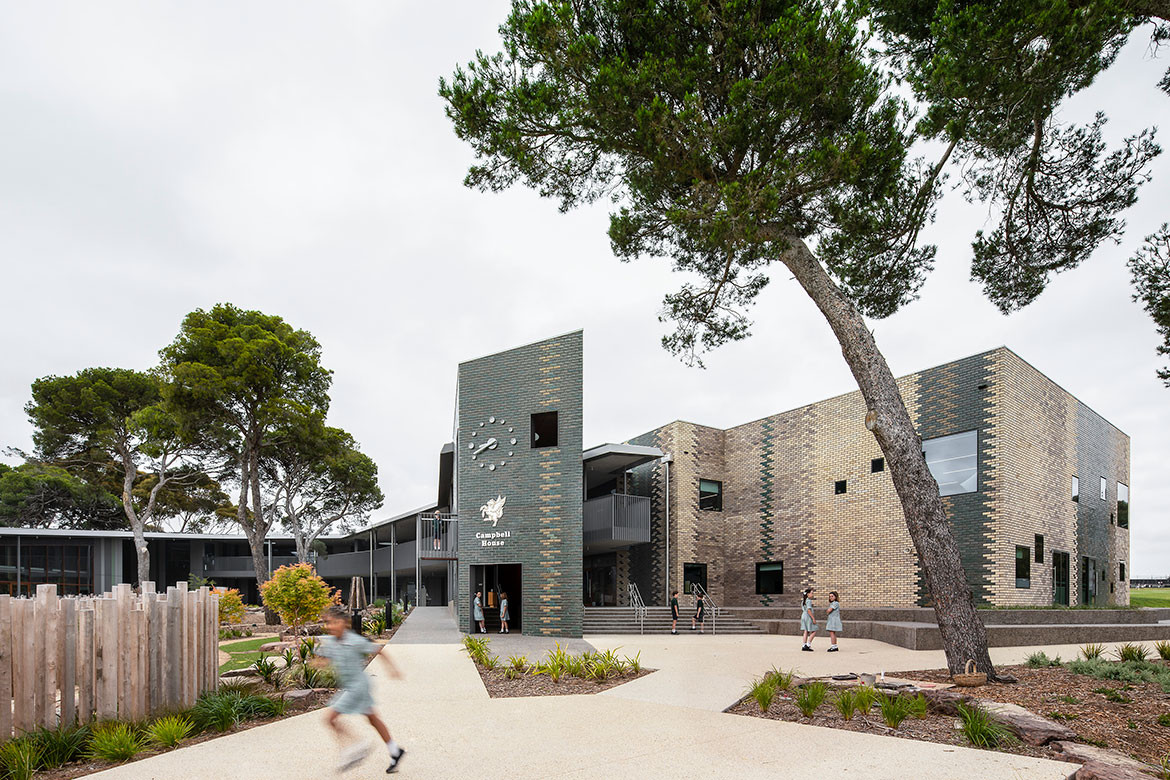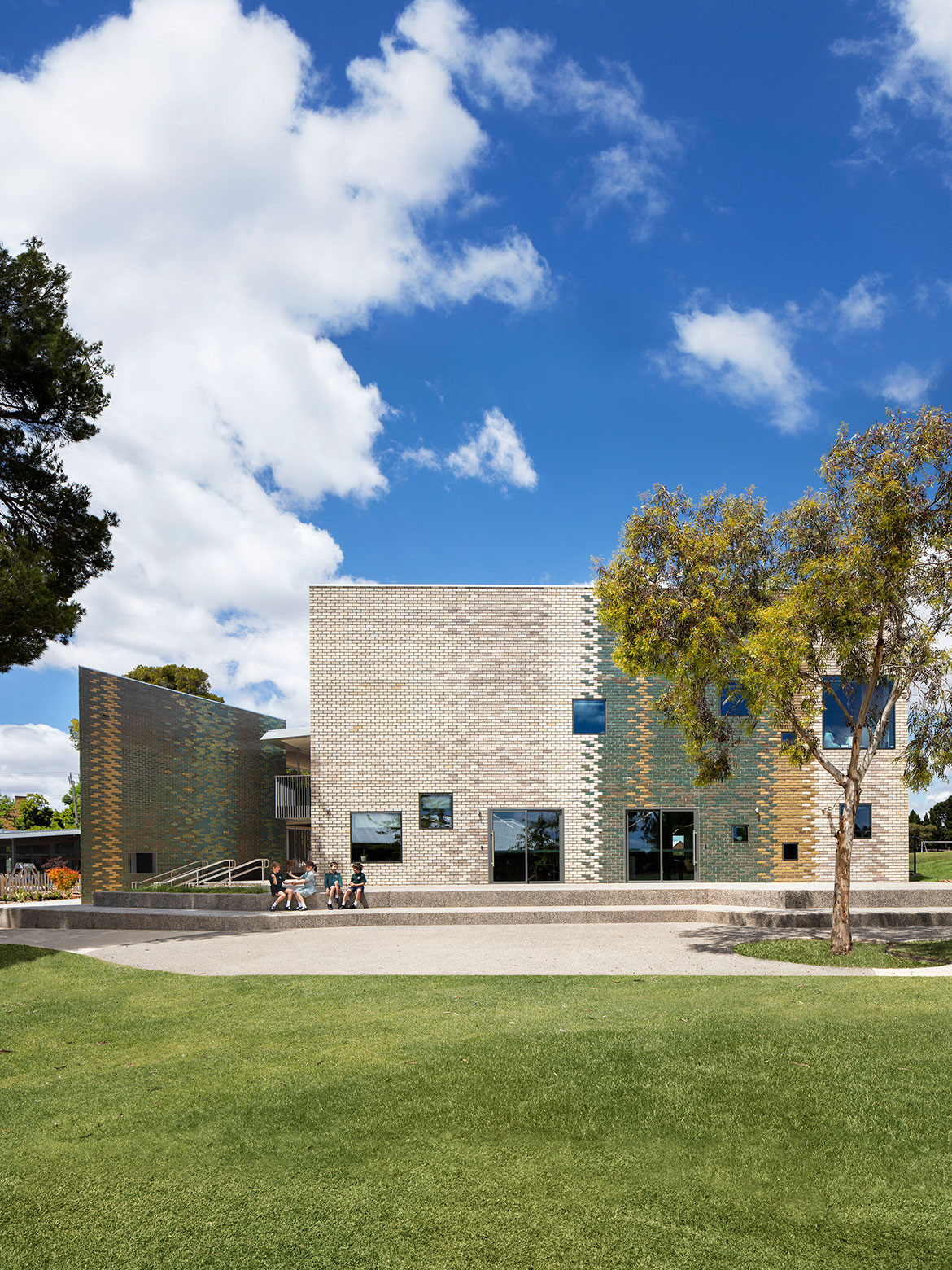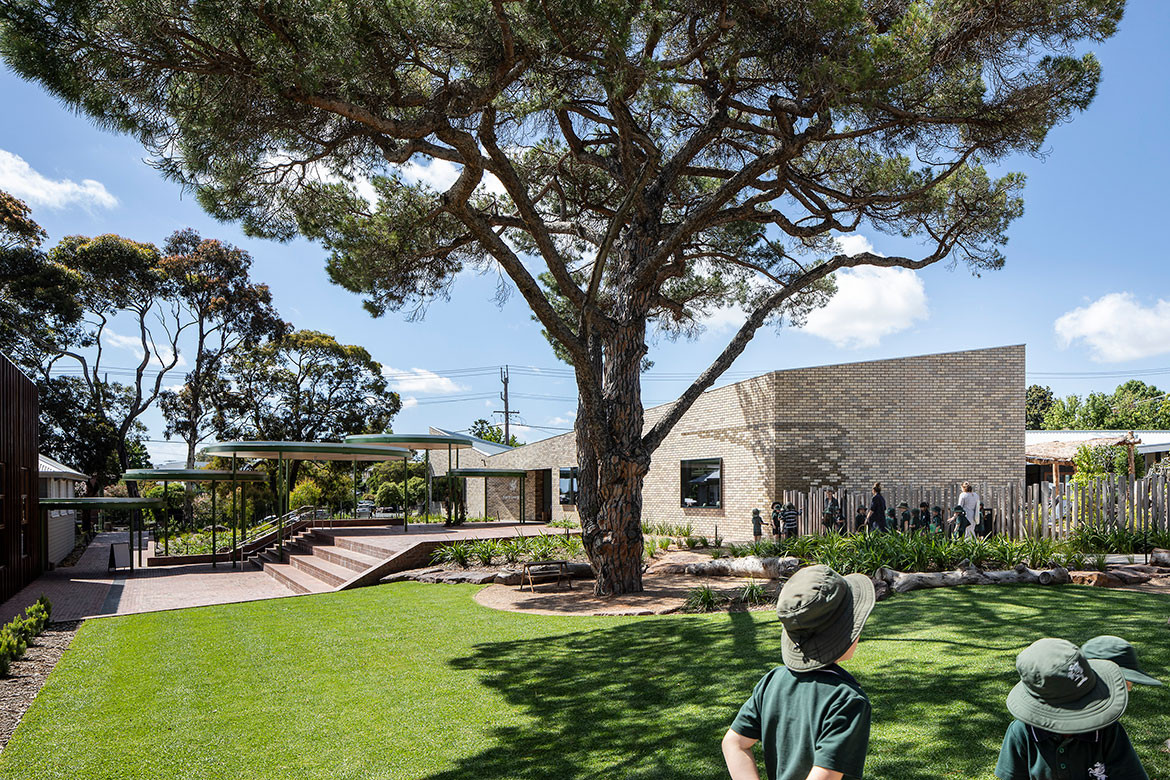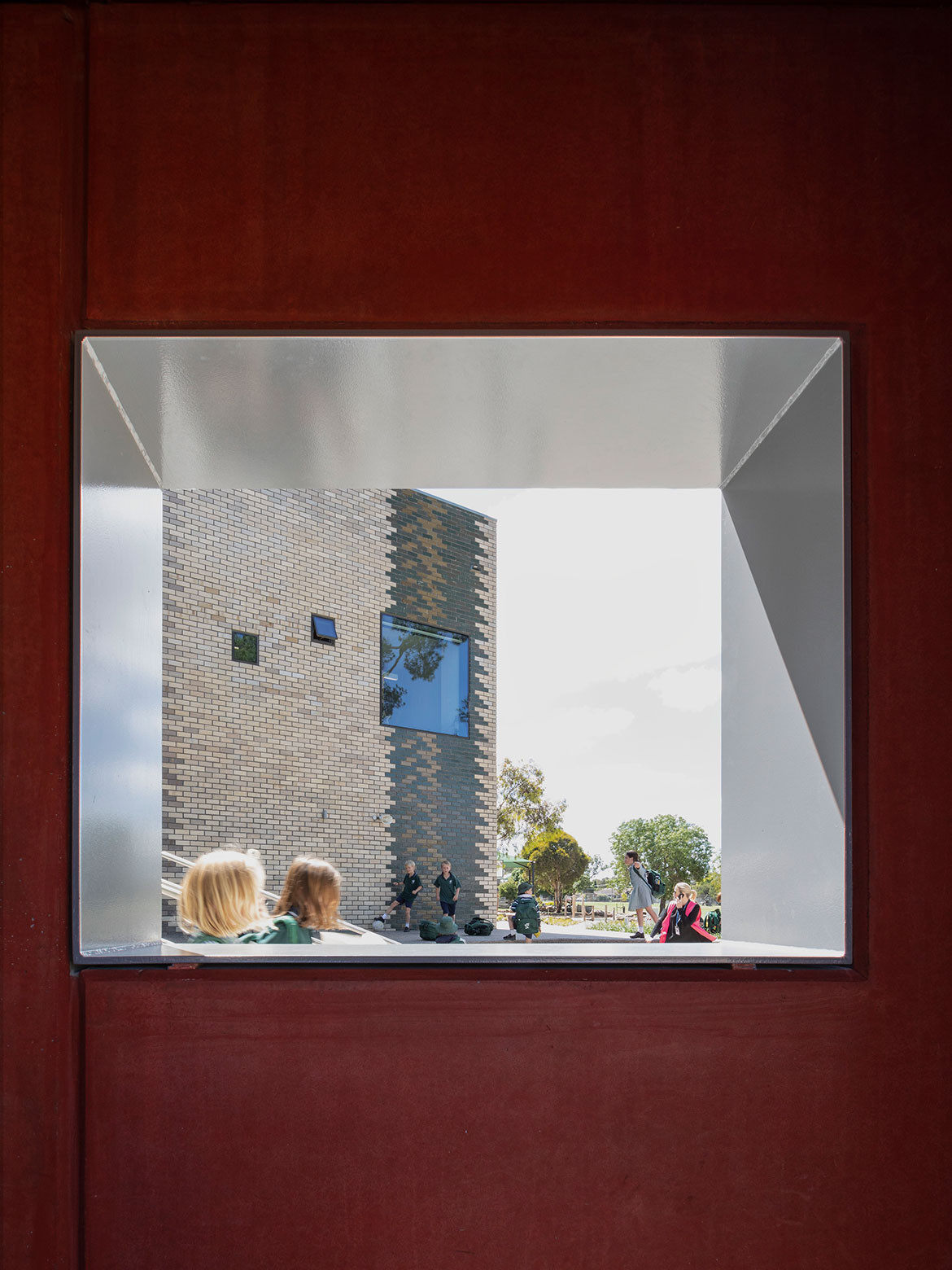John Wardle Architects creates a constructive learning environment to cater for pedagogical advancements at Geelong College Junior School.

If you’ve ever wondered what the architectural embodiment of the proverbial phrase “it takes a village” might look like, the answer lies within the recently completed Geelong College Junior School by John Wardle Architects.
Comprising a new junior school, early learning centre and multipurpose hall for one of Australia’s oldest schools, the project is the first to emanate from JWA’s ongoing masterplan for the independent, co-education boarding and day school. The purpose of the 30-year strategic plan is to bring Geelong College’s facilities into the 21st century for student learning and well-being. Originally established in 1861, the school’s existing structures were no longer able to host present day student population growth and pedagogical requirements.

The design draws upon the school’s pedagogies, which lean into the constructivist Reggio Emilia educational philosophy — a school of thought rooted in discovery based learning. A critical aspect of the approach considers the environment to be “the third teacher”. The new school arrangement resembles a miniature town plan, in which the multipurpose hall becomes the town hall, while squares, plazas and landscaped courtyards are sequenced in between the buildings.
The new school buildings are shaped to provide the optimal amenity and aspect for the learning ateliers. A zig zag plan form brings south light into all the learning environments and provides long views across the playing fields. The form retains the existing site trees, and promotes natural cross ventilation of the spaces. The new school building is sequentially zoned creating year level communities, each with their own identity.


Each of the learning communities are linked by a continuous verandah, promoting outdoor spaces for learning, gathering and play. Within the early learning years, externalised bag areas and dining spaces foster year level belonging. Outdoor teaching spaces and kitchens provide reference points along the veranda in the primary levels.
Vertical connections within the verandah are reinforced through voids and two staircases, one embedded within the plan and another expressed as a clocktower. Here a balcony landing allows games and stories to be shared. The central landscaped courtyard is shared between year levels, creating a soft and rich inner world characterised by the stand of existing trees and fall in grade.


The exterior fabric resembles a “defensive” city wall. The shifting forms and colourful brickwork provide playful protection from the traffic noise to the east and severe westerly winds. A set of deep windows punctuate the wall, its inside face is made deliberately deep containing the shared equipment, art stores and resources. Deep sills create a series of nooks configured to the scale of the children.
The colours and textures of the bricks have been developed specifically for this project and references the landscape tones of the campus. Subtle greens, and greys camouflage with the native trees.


A searchable and comprehensive guide for specifying leading products and their suppliers
Keep up to date with the latest and greatest from our industry BFF's!

Schneider Electric’s new range are making bulky outlets a thing of the past with the new UNICA X collection.

BLANCOCULINA-S II Sensor promotes water efficiency and reduces waste, representing a leap forward in faucet technology.

Its beauty is in its form and function and The Oak Centre sits proud in the landscape of Clonard College.

Fluid and flowing, Cocoon is a school that, through its architectural form, enhances the day-to-day rituals of learning and elevates the experience for the very young.

Michael Carr Architect is leading the way with education design that enhances teaching and supports learning for our most precious resource – our children.

The undulating roof of the Warren Integrated Studies Hub emerges from within the landscape in a fluid fusion of biophilic design and architectural integrity that unearths the immense creative potential of building materials.
The internet never sleeps! Here's the stuff you might have missed

Blooms the Chemist by Tom Mark Henry defies the traditional pharmacy aesthetic by stepping away from the sterile landscapes of pharmacies.

Its beauty is in its form and function and The Oak Centre sits proud in the landscape of Clonard College.